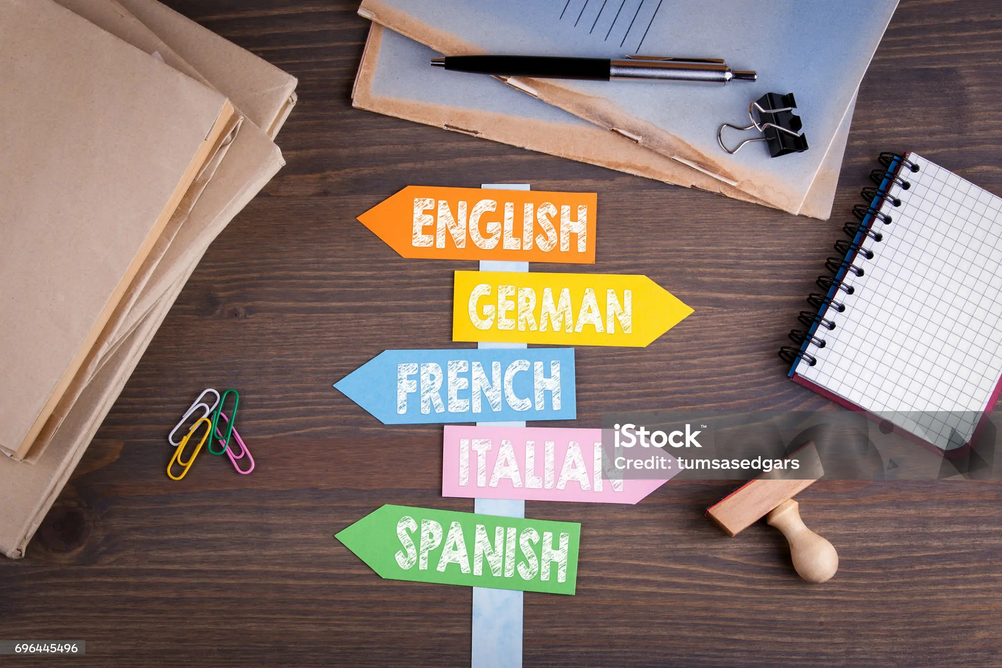CLIL in the Context of Foreign Language Teaching
| Site: | Vitajte v prostredí e-learningu na Filozofickej fakulte PU |
| Course: | ELT: DASS Autonomy Development using ePortfolio |
| Book: | CLIL in the Context of Foreign Language Teaching |
| Printed by: | Hosťovský používateľ |
| Date: | Tuesday, 16 December 2025, 5:03 PM |
Description

1. What is Content and Language Integrated learning
The objective is
- to foster an initial understanding of the CLIL methodology and its potential
- to introduce how CLIL works
- to provide useful CLIL resources and ready-to-use materials
1. Foreign Language Teaching
Teaching a foreign language
includes
- Language competencies - to become fluent in the target language through speaking, listening, reading, and writing.
- Communication Skills - to provide learners the ability to express themselves in authentic contexts.
- Grammar Skills - to construct understandable sentences requires an understanding of grammar rules and structures.
- Vocabulary Acquisition - to acquire a large vocabulary is necessary for both verbal expression and comprehension.
- Cultural Competencies - gain knowledge of the target language's customs, traditions, history, and social norms improves language comprehension and fosters cultural awareness.
- Technology Integration - to improve learners engagement, offer interactive learning opportunities, and make real language materials more accessible.
- Pragmatic Competence - to understand when and how to use language appropriately in a variety of social contexts, both formal and informal.
For this reason, the Content and Language Integrated Learning (CLIL)
method is currently considered an effective method of acquiring
knowledge from a non-linguistic subject and language. Due to the
modernisation of everyday life, it is necessary to modernise and
innovate the teaching process. It is the CLIL method that brings
something "new, non-traditional, out-of-mainstream education" into
foreign language lessons, but also in non-language subjects.
1.1. Warmer
The KWHL concerns your expectations of this topic (see the document KWHL).

Reflect on what you already know about the topic. It could be based on previous lessons, personal experiences, or things you have heard or read about. Write down any facts, concepts, or ideas that come to mind.
Reflect on the areas you are curious about or feel require further investigation. Are there any topics or subjects you would like to learn more about? Make a list of areas of your interest.
Within your portfolio, record your learning as you study or conduct further research. Make notes about new knowledge, interesting findings, or responses to your questions in the "Want to know" section. Consider how your understanding of the subject has changed.
By taking these steps, you will be ready to monitor your progress and gain a deeper understanding of the topic as you continue studying it. You will also activate your prior knowledge and set clear learning objectives.
1.2. Learning a Language or Learning through Language
 CLIL is one of many approaches and didactic methodologies in foreign
language teaching.
CLIL is one of many approaches and didactic methodologies in foreign
language teaching.
Instead of formal language teaching and learning, CLIL offers immediate opportunities for students to use their new language skills; furthermore, it helps achieve the European Union’s language learning goals.
|
Aspects of teaching |
FL |
CLIL |
|
Approach to language learning |
Knowledge transmission based |
Competence-based |
|
Role in the L2 curriculum |
Language-oriented, prat of linguistics |
Cross-curricular, part of general development
|
|
Focus on |
Intellectual development only |
Holistic development
|
|
Delivery of materials |
Ready-made, pre-prepared |
Through problem discovery and problem-solving
|
|
Teacher´s role |
Knowledge transmission |
Providing context for productive language use
|
|
Learner´s role |
Receptive, receiving materials from a teacher |
The learner is an agent of their learning
|
|
Classroom interactions |
Lockstep/frontal/individual |
Co-operative
|
|
Teaching materials and tools |
Mainly course books, paper, pen… |
Coursebooks and authentic materials, audio-visuals and objects, and tools for producing objects
|
|
Teacher´s efforts |
Does not require special effort |
Requires devoted and highly qualified professionals |
|
Final Objective |
Getting by |
Getting better |
| Key features |
FLT |
CLIL |
|
|
conventional |
content-based |
||
|
Objectives and outcomes |
language |
language |
subject content |
|
Performed by |
language or class teacher |
language or class teacher |
subject teacher |
|
Assessed as |
language |
language |
subject |
|
Considered as |
language teaching |
language teaching |
subject teaching |
|
Syllabus |
general language purpose |
language: CALP |
subject content and CALP |
|
Material |
language |
language-subject |
subject |
|
Methodology |
FLT |
language supportive |
language-supportive subject-teaching |
source: adapted from Clegg, J., (n.d.) Planning CLIL lessons. Retrieved from http://www.onestopenglish.com/clil/methodology/articles/article-planning-clil-lessons/500472.article
2. CLIL, Bilingualism and Immersion
 Bilingualism, as an objective
of EU language policy, influenced by individual national policies, undergoes
constant re-evaluation of effectiveness.
Bilingualism, as an objective
of EU language policy, influenced by individual national policies, undergoes
constant re-evaluation of effectiveness.
CLIL and bilingualism
- Content and Language Integrated Learning (CLIL) is closely linked to bilingual education but differs in its objectives.
CLIL aims to improve students' ability and confidence in using the vehicular language rather than aiming for full bilingualism.
- CLIL provides students with a practical and enriching
language learning experience, focusing on both language and content.
2.1. Bilingualism vs. CLIL
 Bilingualism
refers to
the ability of an individual to proficiently speak and understand two
languages. Bilingual individuals have varying degrees of fluency in both
languages, ranging from being fully proficient in both to having a higher
proficiency in one language over the other. Bilingualism is valued for its
cognitive, social, and cultural benefits, allowing individuals to navigate
different linguistic and cultural contexts effectively.
Bilingualism
refers to
the ability of an individual to proficiently speak and understand two
languages. Bilingual individuals have varying degrees of fluency in both
languages, ranging from being fully proficient in both to having a higher
proficiency in one language over the other. Bilingualism is valued for its
cognitive, social, and cultural benefits, allowing individuals to navigate
different linguistic and cultural contexts effectively.
Bilingualism can be acquired through various means, such as
- growing up in a multilingual environment,
- formal language education, or
- immersion programs.
criterion |
definition |
|
origin |
|
|
identification a. internal
b. external
|
|
|
competence |
|
|
function |
the function uses / can use two languages in most situations according to their own needs, wishes and community requirements |
source: adapted from Skutnabb_Kangas, T. (1984). Bilingualism or Not – the Education of Minorities. Clevedon: Multiligual Matters 7.
McCarthy (2012) defines bilingual education as bilingualism at the school level. He further explains that bilingual education should involve using more than one language as the medium of instruction within regular school subjects. The classification of bilingual education was provided by Baker (2007), who formulated ten types ranging from weak forms, such as submersion or transitional form, to stable versions of bilingual education, for example, immersion or two-way bilingual education.2.2. Immersion vs. CLIL
 A method of teaching called language immersion involves immersing learners in the target language from beginning through completion. This means that instruction, communication, and interaction in the classroom occur predominantly or exclusively in the target language, with minimal to no use of the students' native language.
A method of teaching called language immersion involves immersing learners in the target language from beginning through completion. This means that instruction, communication, and interaction in the classroom occur predominantly or exclusively in the target language, with minimal to no use of the students' native language.
Language immersion programmes come in a variety of forms:
- Full Immersion - all instruction is given in the target language.
- Partial Immersion - instruction is progressively increased to include more of the target language during the school day or week.
- Dual Immersion - to foster bilingualism and biliteracy, the programme enrols native speakers of the target language and native speakers of a different language. Instruction is given in both languages.
Through exposure to authentic language use in various circumstances, language immersion programmes seek to provide students with a thorough understanding of the target language. As a result of their continual exposure to the language and encouragement to use it meaningfully, students who follow this technique are thought to gain competency in the target language quite quickly. Furthermore, immersion programmes frequently incorporate cultural elements to improve language acquisition and foster intercultural understanding.
French immersion in Canada
is probably the best-known example of bilingual education on the American
continent. However, in Canadian immersion, the
language of instruction is the other official language of the country, and
immersion teachers are native speakers of this language (Dalton-Puffer, 2008). Bilingual education has a long tradition in countries where more
official language occurs. Immersion
teaching programs depend on conditions such as the availability of materials and teachers' qualifications. Some provide teaching of all subjects in
a foreign language; others offer only some subjects. Programs with embedded teaching appear in many forms throughout
the history of the educational process, e.g. teaching through Greek and Latin in the Middle Ages, or French as
the language of nobility in Europe in the 18th and 19th centuries (Baker,
2011). The Canadian
immersion program has had a significant impact on European bilingual education.
Since the European Commission introduced the acronym CLIL (Eurydice, 2006) as an approach that integrates content and language, it is necessary to distinguish it from immersion. Misunderstanding the terms immersion and CLIL may lead to confusion such as unrealistic aims set in CLIL programmes; students may be required to achieve objectives beyond their current cognition, or teachers may be under too much pressure. While in immersion programmes, instructions are in the language spoken locally, and students are familiar with it, in CLIL programmes, students face a foreign language. Furthermore, language is also crucial for teaching because, in immersion programmes, most teachers are native speakers giving instructions in their mother tongue.
3. Core elements of CLIL theory

The following elements can be considered core attributes of CLIL theory, which overlap at various points:
Teaching various subjects in the target foreign language
The integration of language teaching and immersion in another subject provides the possibilities and necessity for all other core attributes.
Linking language and content learning objectives
The integration of objectives forces teachers and students to combine both language and content matter into every lesson, connecting them to enhance processing of information and thereby learning effectiveness. The use of learning objectives and the formulation of those goals is a part of CLIL: it helps structure learning (scaffolding) and provides students with some learning strategies.
Adjusting language input
To ensure meaningful communication, it is important that the language in the classroom is tuned to the level of students. This includes spoken language and written language. The perfect level of foreign language input is just above the pupil level, often referred to as i+1. The selection of input also includes considering different learning styles and multimodality, discussed below.
Stimulating language output
The production of language and content both enhances and evaluates the learning process. CLIL requires students to learn by using the language, and it is important to stimulate the use of language where possible.
Providing strategies for learning
One way to help students deal with input and produce output is to teach them how to solve problems themselves. Besides, it makes students more independent, allowing them to come closer to authentic language exchange.
Activation of learner's prior knowledge
Another way to help students understand and participate in foreign language classes is first to activate their available knowledge. In addition, activation may increase motivation, provide more structure to the lesson, and implement individual students' differences in the lesson.
Cooperative learning
To create a meaningful language exchange, it is important that students spend time working together and learning from each other. It also facilitates language processing and production, as pupils can help each other understand and produce language and content.
Scaffolding
Scaffolding is the practice of facilitating learners' understanding of language or content and the production of both. This can be done in many ways, including through the other CLIL elements. Essentially, it displays the teacher's awareness of the difficulties of providing content in a foreign language, which they then counter by providing students with the tools and help to work with the materials.
Multimodality
Multimodality in lessons ensures students will receive input and produce output in different ways: visual, spoken, written, hands-on and practical. It facilitates and broadens understanding and provides pupils with 'modes' that cater to different learning styles and learning strategies.